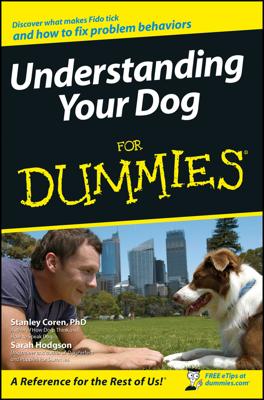When you add two puppies to your household, managing them both is quite the balancing act. Resolving housebreaking, chewing, nipping, or jumping habits in two pups can be double the workload. You have to pay close attention and be very consistent. That said, raising two puppies can give you hours of entertainment watching them play and experience life together.
When left together 24 hours a day, your puppies will form a strong bond to each other, which is good. However, that means they’ll also be less attached to you, which makes influencing their behavior difficult. Separate them at least twice a day and, if possible, let them sleep in separate bedrooms. Have two crates so that each pup gets used to having her own personal space.
Here are additional tips for making life a little easier for everyone in the two-puppy house:
Remember that each puppy is different. Sure, certain similarities string all puppies together. However, like humans, each one has her own unique personality and temperament that affect the way she relates to her world.
Let your dogs establish their hierarchy. Personality affects the way puppies relate to one another. Groups of two or more puppies form a hierarchy, with the most outgoing, assertive one assuming the more bossy position and often the more protective, demanding role.
You may have trouble figuring out which puppy is the leader of your group because it’s not often a straightforward delineation. Puppies don’t base hierarchy on who’s the biggest, the toughest, or who came first. Hierarchy is most often based on who’s the most responsible or level-headed in a given situation. The puppy with both the brains and the brawn wins out. Regardless of your feelings, you must support their arrangement.
Remember the discipline rules. If you don’t know who did it, you can’t correct either puppy. That’s the rule. If you find a mess after the fact, forget it. Correcting both pups only weakens your connection to them and strengthens their resolve to one another.
Allow wrestling, to a degree. Teach your puppies to go to certain areas of the house or outside to play. If they get out of hand, leave short leashes on them in the house to enable interruption and redirection. Say “Shhh!” as you separate them and then instruct them to go “Outside” or to another area to play. If you don’t have enough space for this, instruct “Sit” and refocus them on chew toys. Crate or secure them at a station if they don’t calm down.
Play the name game. Teach your puppies two names: their personal names and a universal one that you can use when they’re together, such as “Dogs,” “Girls,” “Boys,” or “Babies” — whatever works for you. Using a single name makes calling them easier.
Feed your pups separately. Place the leader puppy’s bowl down first. If you’re having difficulty keeping the puppies separate, create two separate feeding stations.
Don’t start a toy war. Of course, you want them both to have a toy. But one puppy keeps insisting on having both. You give it back to the other puppy, and she takes it away. The giving and taking can go on all day. Remember your leadership rule: If the leader wants both, the leader gets both.
If your puppies begin to fight with each other to the point of making you nervous, call a professional to help you resolve the situation. Additionally, if you catch a fight before it begins, shame the underdog and reward the leader with attention. It may feel unnatural, but remember that your dogs aren’t human. If the situation repeats itself, call in a professional.

